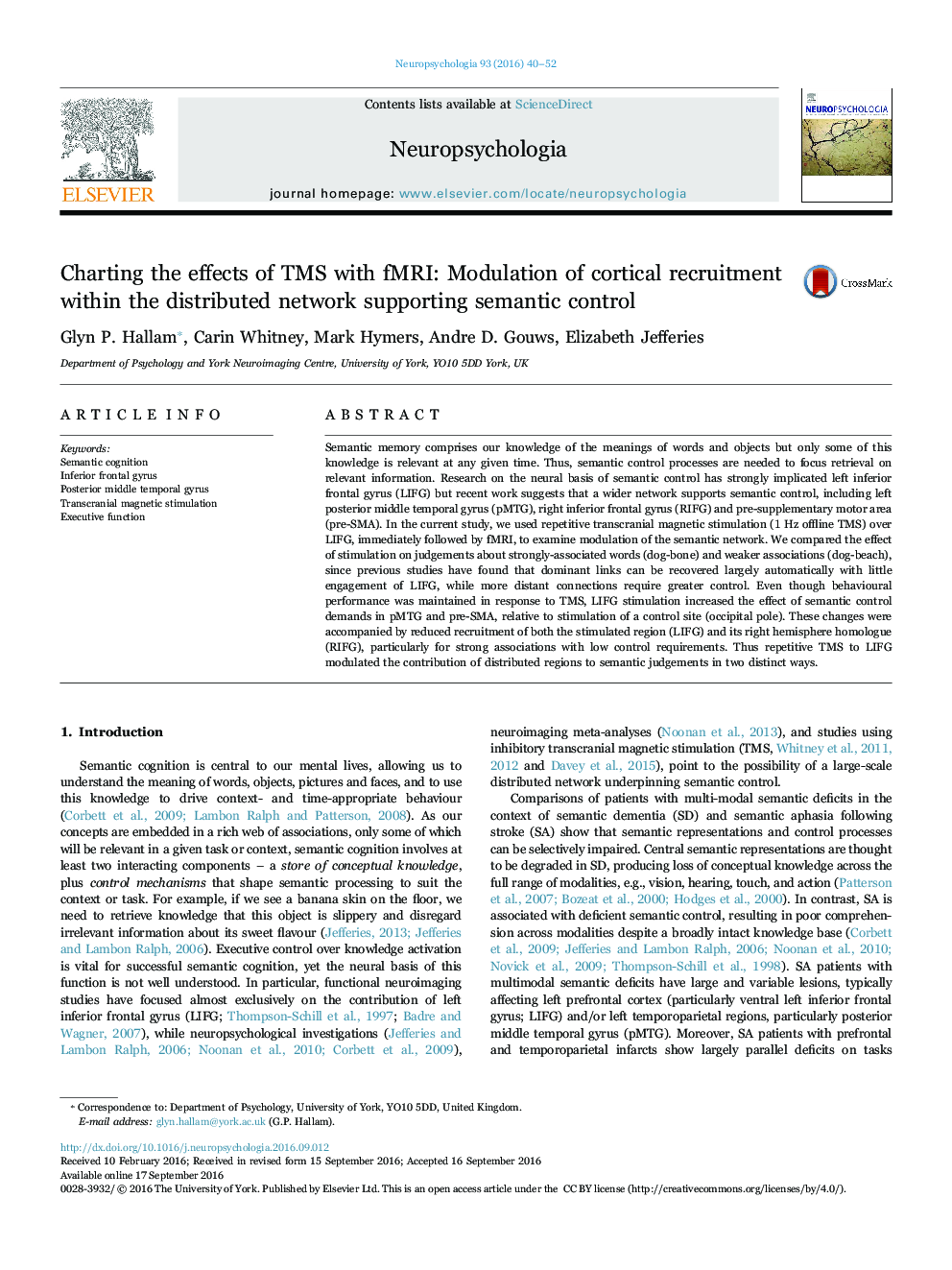| کد مقاله | کد نشریه | سال انتشار | مقاله انگلیسی | نسخه تمام متن |
|---|---|---|---|---|
| 5045313 | 1370661 | 2016 | 13 صفحه PDF | دانلود رایگان |

- Offline rTMS was used to modulate the semantic control system.
- fMRI revealed post-stimulation changes in other areas of the semantic control system.
- Semantic retrieval requires the flexible activation of representations shaped by control processes.
Semantic memory comprises our knowledge of the meanings of words and objects but only some of this knowledge is relevant at any given time. Thus, semantic control processes are needed to focus retrieval on relevant information. Research on the neural basis of semantic control has strongly implicated left inferior frontal gyrus (LIFG) but recent work suggests that a wider network supports semantic control, including left posterior middle temporal gyrus (pMTG), right inferior frontal gyrus (RIFG) and pre-supplementary motor area (pre-SMA). In the current study, we used repetitive transcranial magnetic stimulation (1Â Hz offline TMS) over LIFG, immediately followed by fMRI, to examine modulation of the semantic network. We compared the effect of stimulation on judgements about strongly-associated words (dog-bone) and weaker associations (dog-beach), since previous studies have found that dominant links can be recovered largely automatically with little engagement of LIFG, while more distant connections require greater control. Even though behavioural performance was maintained in response to TMS, LIFG stimulation increased the effect of semantic control demands in pMTG and pre-SMA, relative to stimulation of a control site (occipital pole). These changes were accompanied by reduced recruitment of both the stimulated region (LIFG) and its right hemisphere homologue (RIFG), particularly for strong associations with low control requirements. Thus repetitive TMS to LIFG modulated the contribution of distributed regions to semantic judgements in two distinct ways.
Journal: Neuropsychologia - Volume 93, Part A, December 2016, Pages 40-52